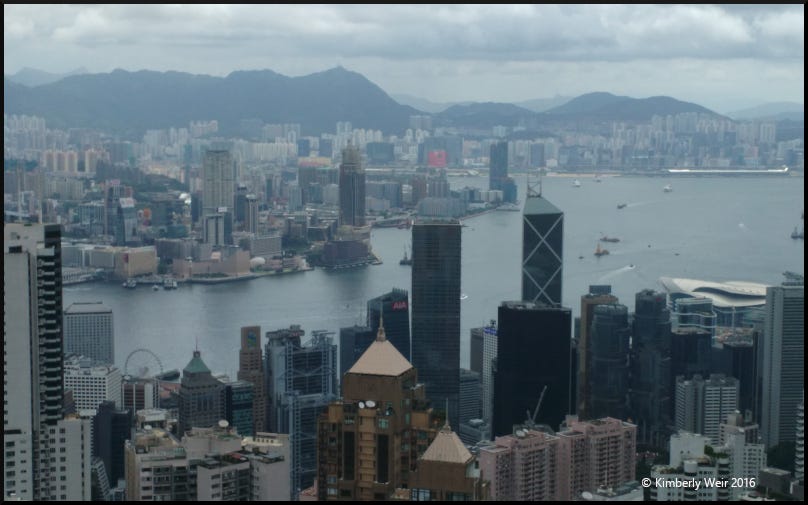The Consequences of Urban Sprawl
Urban sprawl offers bigger houses, but at more than just a financial cost, with longer commutes, higher utility bills, and wildlife invasions. But sustainable housing is possible--and happening.
On a recent family vacation in the mountains of West Virginia, we stayed in an enormous rental property. On one hand, I appreciated that space it afforded us—except for the kids, everyone had their own bedroom and en-suite bath. On the other hand, the sustainability critic in me had difficulty getting past all the resources a 4,631 square foot house burned through in a day. I also couldn’t help wondering how many weeks of the year this house was unoccupied, but still using power for flood lights, a security system, and, at least, minimal heat during the winter. Furthermore, the impact that owning a second (or third, fourth, fifth…) home drives up prices in the market, as builders want to cash in on the bigger earnings potential over more affordable housing projects.
To be fair, my spouse and I live in a large house, so in 2,042 square feet—we basically occupy 1,000 feet each. For every carbon footprint quiz I’ve completed, I’ve been dinged for the size of my living space. The builder-basic house certainly wasn’t the appeal; it was the 2.29 acres, surrounded by trees, abutting a large city forest. We have all of the conveniences of a metro area away at the end of our 250-yard driveway. But bigger houses have come at a cost.
Median House Prices
For someone who cares about the planet, I spend a lot of time feeling bad about this life choice. But, for some reason, it was this vacation house that really got me thinking about the issues with sustainable housing. Perhaps it’s due to the flood of recent attention from news sources about the lack of affordable housing in the U.S. (NPR, NYT, LAT). Reports from the government, legislators, academics, banks, mortgage firms, and investors are concerned about the shortage of affordable housing for buyers and renters. This problem isn’t limited to the U.S.; housing costs in the U.K., Australia, and Canada are also exorbitant. The greater economic incentive to build McMansions outweighs that of low- or middle-income housing. From choice of building materials to deforestation, sprawl and lack of affordable housing are sustainability issues.
Most coincidentally, The Economist just happened to release its list of the World’s Most Liveable Cities as Michael and I were getting ready to record Sustainable Housing in the Spawl. For those familiar with its annual index, The Economist ranks 173 cities from most to least liveable. As one can imagine, the least desirable tend to be war-torn (Damascus, Tripoli, Kyiv); overcrowded, with Lagos topping a list that includes Karachi and Dhaka; or cities that should be thriving but aren’t thanks to terrible governments, such as Caracas.
The ones that top the list usually make me role my eyes because they’re ridiculously expensive—Zurich, Singapore, Hong Kong— and aren’t keen on American ex-pats—Auckland, Melbourne, Osaka. (It’s no coincidence that The Economist’s list of the World’s Most Expensive Cities corresponds with the most liveable ones.) Canada doesn’t want Americans, either, but can rejoice, because the affordable Calgary and Vancouver made the top 10, with Toronto not too far behind. Even Montreal was higher and far less expensive that the first U.S. city, Honolulu, with a median house price of $650,000 for 878 square feet.

The Utility Bill is How Much?!?
No rocket science is required here to calculate that bigger houses use more resources, no matter how energy-efficient the design. Heating, cooling, and lighting increase with square footage. No one wants to live in an empty house. Invariably, more rooms mean more furniture. At our vacation rental, I was struck by the sheer amount of furniture throughout the house that was more for show than utility. More rooms = more dust = more cleaning = more water and electricity.
Larger suburban houses sit on bigger properties, thus demanding more water and energy to maintain the lawn. Similarly, short of installing tankless water heaters, a bigger house means hot water takes longer to reach a tap. Despite many minutes of searching, I couldn’t find reliable data on the percentage of U.S. households with tankless water heaters. I discovered that the U.S. Department of Energy estimates tankless heaters to save 24-34% more energy. Like many energy-saving options, the up-front cost often deters homeowners, especially when considering how long they might stay in that house.
Prior to electrification, houses typically had more and larger windows to admit natural light. Architectural design and cost dictated this choice once on the grid. For affordability and greater privacy in suburban developments, houses (along with adjoining condominiums and townhouses) tend to have fewer windows. In an attempt to meet lower-end demands, designs have fewer doors and windows. With less natural light, electricity bills are higher.
Drive Time
While driving, I occasionally find myself wondering how much the city of Cincinnati subsidizes its public transit system given the mostly-empty buses and tram cars. Unlike the intricate networks of rail and underground systems that developed along with population growth in Western and Central Europe, the sheer size of the U.S., Canada, and Australia didn’t offer the same incentives or ease of connection. This study supported my supposition that Western Europeans tend toward public transportation—and ‘active mobility’, i.e. bikes—while commuters in vast countries rely on cars. Similarly, more people in Paris and London use public transportation than in outlying cities, though Rome is an anomaly—apparently everyone wants to squeeze their mini-Fiat into a parking space.
More people living outside of cities requires more people commuting to work, with Business Insider reporting an average of 30-35 minutes for drivers in New York, Washington D.C., and Los Angeles. Of these cities, New Yorkers are, by far, most likely to rely on public transportation, at 30%, versus the next highest, Washington D.C. at just 6%. And what has become an acceptable commute time has shot up considerably over the years. Danbury, Connecticut is a ‘bedroom community’ for people with day jobs in New York City, despite more than a two-hour average commute each way in good traffic. On the West Coast, Playa Vista mirrors Danbury’s appeal for L.A. commuters, but with a much more reasonable slightly under two-hour expected drive time. Though Londoners’ commute time is on par with their New York counterparts, commute time in the developed E.U. countries and down under in Australia is commonly less than 30 minutes.

To accommodate the increased number of vehicles, the Katy Freeway in Houston, Texas, has 26 lanes at its widest point. Apparently widening the roads and adding lanes doesn’t solve traffic issues, which is just as well since it’s a challenge for older cities like New York and Chicago. Meanwhile, a 2020 proposal for L.A. was ruled a violation of the EPA’s Clean Air Act. Along with added pollution from running on (almost exclusively) fossil fuels and electricity for traffic lights, wear and tear on the roads (and vehicles) demand fixing potholes and resurfacing roadways. Since these are public roads, governments foot the bill for repairs, debris and snow removal, policing, and emergency crews.
Your New Neighbors
Expansion blurs the lines between urban and rural. People are much more likely to see foxes and bears in their backyard than 50 years ago. As humans have expanded outward from cities, developers have encroached on wildlife habitats, displacing animals, now deemed to be a nuisance to homeowners. Deer forage on supposed ‘deer resistant’ plants, raccoons invade attics, and coyotes roam city streets.

In addition to the impact on wildlife, deforestation contributes to the spread of infectious diseases carried by insects. According to the U.S. EPA, Lyme disease is an indicator of climate change. First identified in Connecticut, it’s now spread as far as Minnesota. As badly as I’d like to move back to New England, my spouse and I determined that our daily hikes with our dogs present too much of a risk, with the 164% increase in infection rates.
What’s changing?
Sustainability tends to lose out to glitz and cost. Tankless water heaters might make the cut because they provide hot water on demand. But solar panels, higher quality insulation, and triple-glazed windows take a back seat to aesthetically-appealing countertops, flooring, and light fixtures. Add to that, investors interested in bigger mortgages and politicians hoping for reelection, governments are hard-pressed to enact laws that require sustainable building.
Some of the more progressive states, like Oregon, and various cities have enacted zoning laws limiting the location, size, and even type of dwelling. These policies range from eliminating single-family houses to increasing the number of lots within neighborhoods. I personally recoil at this, having lived literally on top, below, and next to neighbors. While I can embrace the tiny house movement of recent years in spirit, cramming two people into the average 225 square feet is quite unappealing.
Along similar lines, container houses have recently surfaced, though some argue that repurposing shipping containers is less than environmentally friendly and a bigger waste of resources. It will be interesting to see whether other neighborhoods like Culdesac, in Tempe, Arizona, catch on. Prohibitively expensive, yet fantastically green, it’s a car-free neighborhood that’s akin to Smart Cities in design.
More practical and promising is 3-D house printing. Starting to catch on in the U.S., 14Trees has been printing schools and houses in Africa since 2021. In addition to being affordable, they (reportedly) have 50% less of an environmental impact. Also encouraging is that the demand for bigger houses in the U.S. that led to square footage doubling in 40 years has recently reversed. And Harvard’s The State of the Nation’s Housing Report for 2024 indicates a slow-but rising- increase in multifamily rental units and single-family construction to fill much-needed demand.
I’m more hopeful about the potential for sustainable housing than other environmental issues. Though they might struggle against corporate interests in some ways, governments support corporate research and development and, along with voters, benefit from tax incentives for greener options. Both businesses and buyers have an economic incentive, so it’s a win-win for them and the environment. This outcome is a lot easier to achieve than coordinated sovereign countries to tackle climate change.





